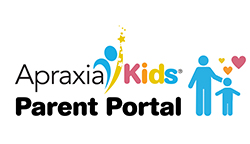One of the biggest hurdles we face when teaching a child with apraxia to talk is convincing him/her to try. Children learn at a young age that failing doesn’t feel good. We want to change this thought as soon as possible because, much like learning to ride a bike, your child is going to have to “fall” a lot when learning to talk. Imagine going to a foreign country where you can understand the language but you have no idea how to speak it. Every time you try to talk to somebody, you say the words wrong or a random sound comes out. The person you are trying to talk to doesn’t know what you are saying or keeps telling you to say it differently. Imagine how frustrated you would get. As parents, all we want is to hear our children talk. So, we spend all day trying to get them to just say a word and when it doesn’t come out right, we make them keep trying. This is the first shift we have to make: balancing the amount of effort we’re asking for with an amount of success that makes the effort worth it.
At first, every time your child tries to talk, he/she should be rewarded. (This will need to change eventually). An early challenge can be getting your child to use words to ask for something. For so long they got the wanted item by pointing or grunting. We have to change our behavior first. We have to expect more. Start by requiring your child to do something other than point or grunt (make a sound that’s different from a grunt, use a sign, point to a picture, etc.). Your therapist will tell you how much to require from your child and when to make things harder. The best reward is being understood, whether the utterance was a request, a comment, or a question. If the message is clear, let them know that. If it was only partially clear, be sure to let your child know which aspects of the message got across. For example, you might say, “I hear you saying that you want something from the cabinet but I’m not sure what it is. Can you please try that word again?” or “You’re telling me something funny the doggie did. Tell me again what the funny doggie did.”
Some children will only try to say a word if you say it first. We want to break away from this and encourage trying alone. This can be really hard. Similarly to teaching to ride a bike, you can hold on five times and then slowly let go on the sixth try. This could be as simple as drawing six circles on a piece of paper: you say the word first five times (put an x in a circle each time) and on the sixth time your child should try alone. Don’t try to fix how the word sounded, celebrate the try! An intermediate step could be to give the child the choice: “Did you say ‘apple’ or ‘pear’?” At first, say the word that the child is attempting second so that they can imitate it directly (e.g., say “‘apple’ or ‘pear’?” when you know they want the pear). Gradually shift to saying the target word first (“‘pear’ or ‘apple’?”) so that their imitation is a little bit delayed. After three attempts, praise them for trying even if their production didn’t improve, and give them what they were asking for.
As you get into speech therapy, your therapist will teach you how to work with your child on saying the words correctly. There may be certain cues that you should use or certain sounds for which you should push for accuracy while you let other errors slide for the moment.
Watch your child’s mood to make sure you choose the right times to push for more. You will want to continue to let your child have times when trying is still celebrated. They will probably know that the word didn’t come out right. It is important to make sure your child remains confident. Too much correction can make them stop trying. Take a step back and ask for more support from your therapist if you notice that the child is getting more frustrated or giving up.
January 2022
By Aubrie Hagopian, M.A., CCC-SLP
